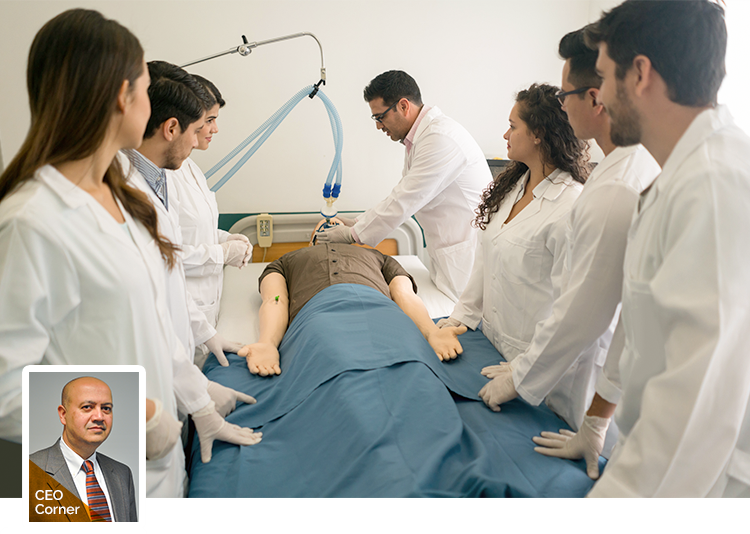Via HealthySimulation.com:
Today, Anurag Singh, EMS President And CEO, Shares Valuable Insights On The Culture of Openness and the Sharing of Data.
Let’s consider the past and present of clinician communication. The adoption of electronic medical records (EMR) was intended to foster “openness,” “data sharing,” and “best practice” for patient safety. What has this really yielded? Is there more data sharing or less? Talk to a doctor in active practice today and you will find that that there is more time spent following documentation protocols in the EMR that do not provide more actionable intelligence for their fellow practitioners.
What is missing is the good, old fashioned – pick up the telephone – collaborative culture that used to exist. Focusing on how and when to communicate, whether it is face to face, via telephone, or electronically is key to providing a true interdisciplinary and strategic approach to developing individualized patient care plans that not only treat the immediate issue for the patient today – but take the entire continuum of patient care into consideration. Technology that promotes these concepts – not inhibits them – will be how we truly measure competency tracking and patient safety improvement over time.
Communication lapses across individual caregivers and patient care teams that operate in silos are a primary cause of ineffective patient treatment. Traditional medical training has long focused on treating the patient during a specific incident, versus developing and delivering an integrated patient care plan over time. Training has the most impact when it is tailored to the learners, where it can be delivered in incremental segments, and reinforced. Adult learning has a different dynamic from learning in traditional academic settings. For active clinicians, training must be easy to use and fit within their already crowded schedules.
Now what about a look at the future of clinician communication? One of the new buzzwords in medical training revolves around interprofessional education (IPE). But what does this really mean? How does it differ from TeamSTEPPS? How can this be applied to active practice?
One of EMS’ recent technical innovations focuses on where and how learning can migrate to the palm of one’s hand for collaborative care for a patient over time. It’s geared toward providing team-based training for interprofessional education and practice. This collaborative, web-based platform is delivered through any mobile device or tablet. The scenarios provide practice for a variety of different disciplines to develop and deliver integrated care plans over time spanning multiple medical encounters. Participants can train together (synchronously) through live chat and video teleconferencing for real time collaboration or as their schedule permits (asynchronously).
Today’s article was guest authored by Anurag Singh, President and CEO at Education Management Solutions (EMS).

